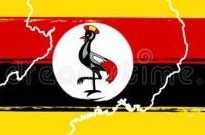Location and size
Mpigi district boarders with the districts of Wakiso in the North East and East, Mityana in the North, Butambala in West and North West, Kalangala and Lake Victoria in the South and Kalungu is to the south West. The District lies on the shores of Lake Victoria, the largest fresh water lake on the Continent of Africa. The Equator, a natural spectacular phenomena traverses the district at Nabusanke in Nkozi sub-county and River Katonga One of Uganda’s longest rivers that Joins Lake Victoria to Lake George traverses the district in Nkozi Sub County.
District headquarters are situated at Ssaabwe hill 2 kms along Mpigi – Butambala Road off Kampala -Masaka Highway and it is 35 kms from Kampala the Capital City of Uganda. Tthe district has a total area of 1,541.13 square kms which is about 0.07% of the country size of which land area is 1,397.19 sq.km.
Mpigi District lies between latitudes 0.20 South and 0.40 North and longitudes 31.80 East and 32.30 East, with an average altitude of 1100m-1400m above sea level.
Historical Background
Mpigi District is one of the districts of Uganda situated in the Central Region of the country, often referred to as Buganda Region. Mpigi District is one of the 112 districts of Uganda. It was one of the first 39 districts to be decentralized under the then Resistance Councils Statute No. 15 of 1993. This statute was repealed and replaced by the Local Government Act 1 of 1997 ammended in 2006. By the act of parliament, the district was split into Wakiso and Mpigi Districts in November 2000 and on 01/07/2010 Mpigi District was further split into three districts of Butambala, Gomba and Mpigi District. The current Mpigi district consists of one county which is divided into two constituencies namely Mawokota North and Mawokota South. There are Six Sub Counties and one Town council.
Tourism
The district has a diverse core attractions but unexploited for tourism such as the L. Victoria shoreline, Equator, Forests, cultural sites, river spots and sceneries. The following are the tourist sites found in the district; the Equator, Mpanga Eco Tourism site, Katebo Crocodile Site, Landing Sites and Beaches on Lake Victoria, Cultural Sites (Kibuuka Omumbaale and Baganda Clan sites, Namirembe cultural site), Nsamizi Institute of Socio Development, Nkozi University, River Katonga, Nkozi Hospital, Bird Watching, and Katonga River. In addition, the district has got hospitality centers which include resorts, guesthouses and restaurants.
Financial Services
The district’s financial sector is composed of both local and multi-national Commercial Banks (Centenary Bank and Stanbic Bank), Mcro-Finance Institutions (Vision Fund, Mwodet, and Mednet), Savings and credit cooperative societies (SACCOs). Given the micro and small scale operation of businesses in the district, Micro-Finance and SACCOs take up the biggest financial services clientele.
Training Institutions
The district has two universities (Uganda Martyrs University and Nsamizi Institute of Social Development) and one technical school (Katonga Technical Institute). The district also has vocational training institutions in various sub-counties.
Economic Infrastructure
The district is traversed by two great roads that connect to neighbouring countries of Tanzania, Rwanda and DRC Congo (Kampala-Masaka-Katuna Road and Kampala-Fort portal Highways) and a well-developed road network of feeder and community access roads. Many parts of the district are connected to national power grid and the district has four rural gross centres and Town council that have access to piped water. There are 14 established markets which deal in various food stuffs and merchandise. The district is well covered by all telecommunication networks and as a wider coverage of both community and regional radios.
Geographical Features
The district lies in the central plateau of Uganda comprising of flat topped –undulating hills with deeply incised valleys. Hills summits range between 1100m-1400 meters above sea level. These hills form part of the catchment for both seasonal and permanent wetlands that drain most low lying areas. The topography and geology provides abundant gravel and rocks resources used in construction. The underlying geology comprises mainly of rocks of Precambrian age that are highly weathered. The most dominant rocks being of the Buganda-Tooro system
The district relief is generally made of plateau and small undulating hills characterizing the Buganda surface and lying between 1,182 and 1,341 meters above sea level. Much of the low lying areas are drained by seasonal streams.
Climate, Rainfall, Temperature, Humidity and Winds
The District experiences a bi-modal rainfall pattern with first rains occurring between March and May and second rains coming between September and November with an average rainfall amount of 1320 mm though in many areas around the Lake zone it is between 1750mm and 2000mm.
Mpigi District has an average annual maximum temperatures ranging between 22.50C and 270C. Average relative humidity ranges between 80% and 95% especially in forest areas. The average monthly days of rainfall are 11. The minimum temperature in the district is 110 C while the maximum recorded is 27 0C.
Mineral Resources
The district has a variety of iron deports, stone debris, Murrum and clay soils
Vegetation
The District is characterized by evergreen vegetation with many seasonal wetlands and few areas with savanna type of vegetation.
How to Apply for Mpigi District Vacancies
Apply for Mpigi District Vacancies
Contact Details
P.o box,172, Mpigi, Uganda
TEL: 0392 715 397
FAX, 256 417 10111
Email: info@mpigi.go.ug
